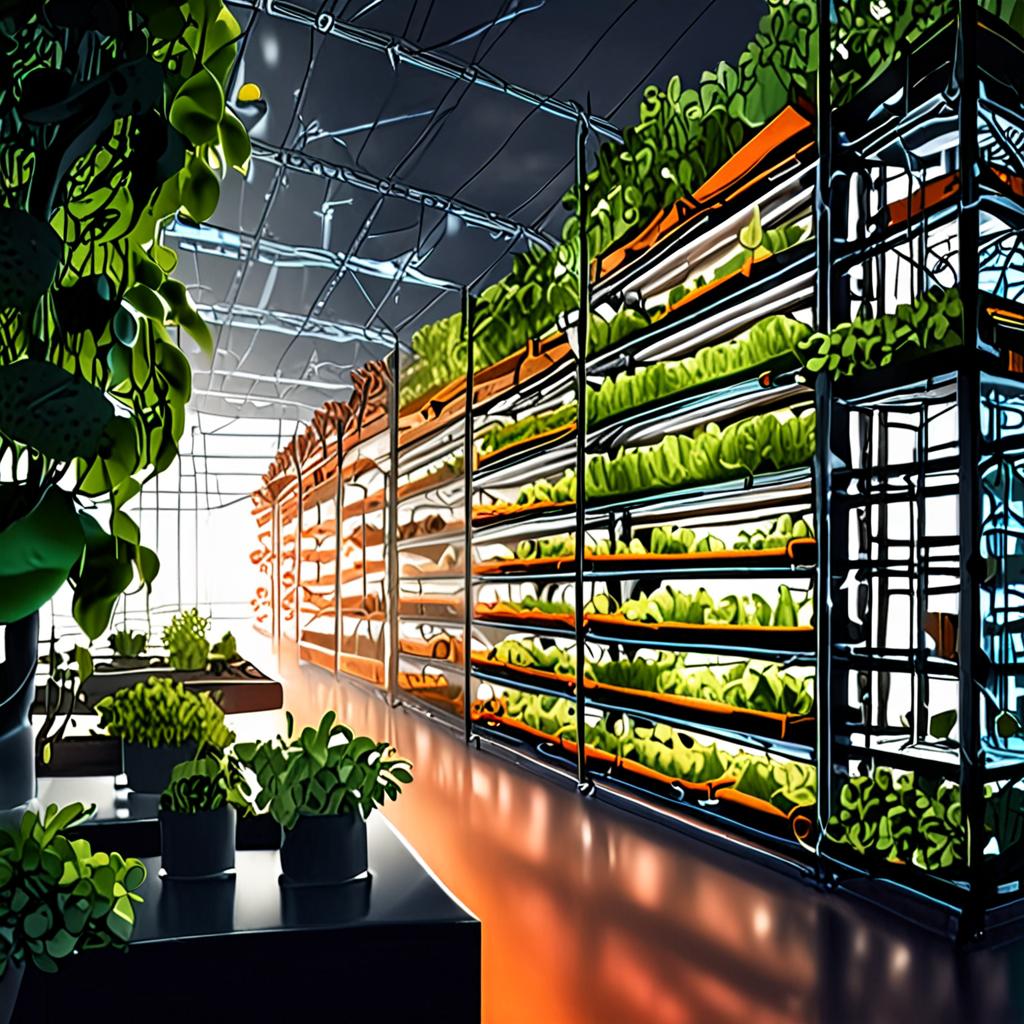Introduction
The world’s population is projected to reach 9.7 billion by 2050, putting immense pressure on traditional farming methods to produce more food while minimizing environmental impact. However, conventional agriculture is a significant contributor to greenhouse gas emissions, water pollution, and land degradation. The challenge lies in increasing food production while reducing the environmental footprint.
Existing methods, such as hydroponics and aeroponics, have shown promise but are often limited by high energy consumption and lack of scalability. For instance, a study by the University of California found that hydroponic systems can consume up to 30% more energy than traditional farming methods.
Artificial intelligence (AI) is revolutionizing vertical farming by addressing these challenges. Techniques such as machine learning, computer vision, and predictive analytics enable farmers to optimize crop yields, reduce water and energy consumption, and detect diseases early. AI-powered tools, like precision climate control systems and autonomous monitoring drones, can also help farmers respond to changing environmental conditions in real-time.
In this blog, we will explore real-world examples of how AI is transforming vertical farming, from optimizing crop growth to reducing waste and improving supply chain efficiency.
Unlocking Urban Food Systems: The Role of Vertical Farming in Reducing Environmental Footprints
Vertical farming is a transformative approach to urban agriculture that involves growing crops in vertically stacked layers, often in indoor environments. This method is crucial for reducing environmental footprints in urban food systems, as it minimizes land use, conserves water, and decreases transportation emissions.
A notable example of vertical farming’s potential is the AeroFarms facility in Newark, New Jersey, which produces over 2 million pounds of leafy greens per year using only 30,000 square feet of space. This is equivalent to the yield of 390 acres of traditional farmland.
Artificial intelligence (AI) plays a vital role in optimizing vertical farming operations, enabling real-time monitoring and control of temperature, humidity, and nutrient levels. AI-driven sensors and machine learning algorithms can detect early signs of disease and pests, reducing the need for chemical pesticides and optimizing crop yields. By leveraging AI, vertical farming can achieve measurable improvements in resource efficiency, crop quality, and environmental sustainability, ultimately contributing to a more resilient and sustainable food system.
Navigating the Economics of Vertical Farming: Scalability, Efficiency, and Market Viability
Vertical farming’s economic viability hinges on its scalability and efficiency. As the global population is projected to reach 9.7 billion by 2050, increasing food production while minimizing environmental impact is crucial. Vertical farming offers a promising solution, with the potential to increase crop yields by up to 30 times while using 90% less water and 99% less land compared to traditional farming methods.
A notable example is AeroFarms, a New Jersey-based vertical farm that has achieved a 30% reduction in costs and a 20% increase in yield through the use of AI-powered climate control and precision agriculture. By leveraging machine learning algorithms, AeroFarms can optimize growing conditions, predict and prevent crop diseases, and reduce energy consumption.
AI-driven technologies are key to unlocking vertical farming’s economic potential. By analyzing data on temperature, humidity, and nutrient levels, AI can optimize growing conditions, reducing waste and increasing efficiency. Additionally, predictive analytics can help farmers identify trends and make data-driven decisions, further improving scalability and market viability. As the vertical farming industry continues to grow, the integration of AI will be crucial in driving measurable improvements in efficiency, productivity, and sustainability.
Integrating Technology and Innovation: How Data-Driven Approaches are Enhancing Vertical Farming Practices
Integrating technology and innovation is crucial for the growth and sustainability of vertical farming. By leveraging data-driven approaches, farmers can optimize crop yields, reduce waste, and promote environmental sustainability. This convergence of technology and agriculture is often referred to as “precision agriculture” or “smart farming.”
A notable example of this integration is the use of artificial intelligence (AI) in vertical farming. For instance, a study by the University of California, Davis, found that AI-powered systems can increase lettuce yields by up to 20% while reducing water usage by 25%. This is achieved through the analysis of real-time data on temperature, humidity, and light levels, allowing for precise adjustments to optimize growing conditions.
The use of AI in vertical farming enables farmers to make data-driven decisions, reducing the risk of human error and promoting more efficient use of resources. By embracing these innovative approaches, vertical farming can continue to play a vital role in promoting sustainable living, ensuring a more food-secure future for generations to come.
Conclusion
Artificial intelligence (AI) has significantly enhanced vertical farming’s potential to transform the future of food production, enabling data-driven decision-making, optimized crop yields, and reduced environmental impact. By integrating AI-powered monitoring systems, vertical farms can now predict and prevent crop diseases, detect nutrient deficiencies, and automate harvesting processes.
As the vertical farming industry continues to evolve, two key next steps can accelerate its growth and sustainability:
- Experiment with AI-driven crop selection: By analyzing climate, soil, and market data, farmers can identify the most suitable crops for their vertical farms, reducing waste and increasing profitability.
- Adopt energy-efficient LED lighting systems: Optimized LED lighting can reduce energy consumption by up to 50%, minimizing the carbon footprint of vertical farms and making them more environmentally sustainable.
By embracing these innovations, vertical farming can further reduce its environmental impact, increase crop yields, and provide a more sustainable solution for feeding the world’s growing population. As the industry continues to innovate, it’s essential to prioritize data-driven decision-making, energy efficiency, and sustainable practices to ensure a food-secure future.
